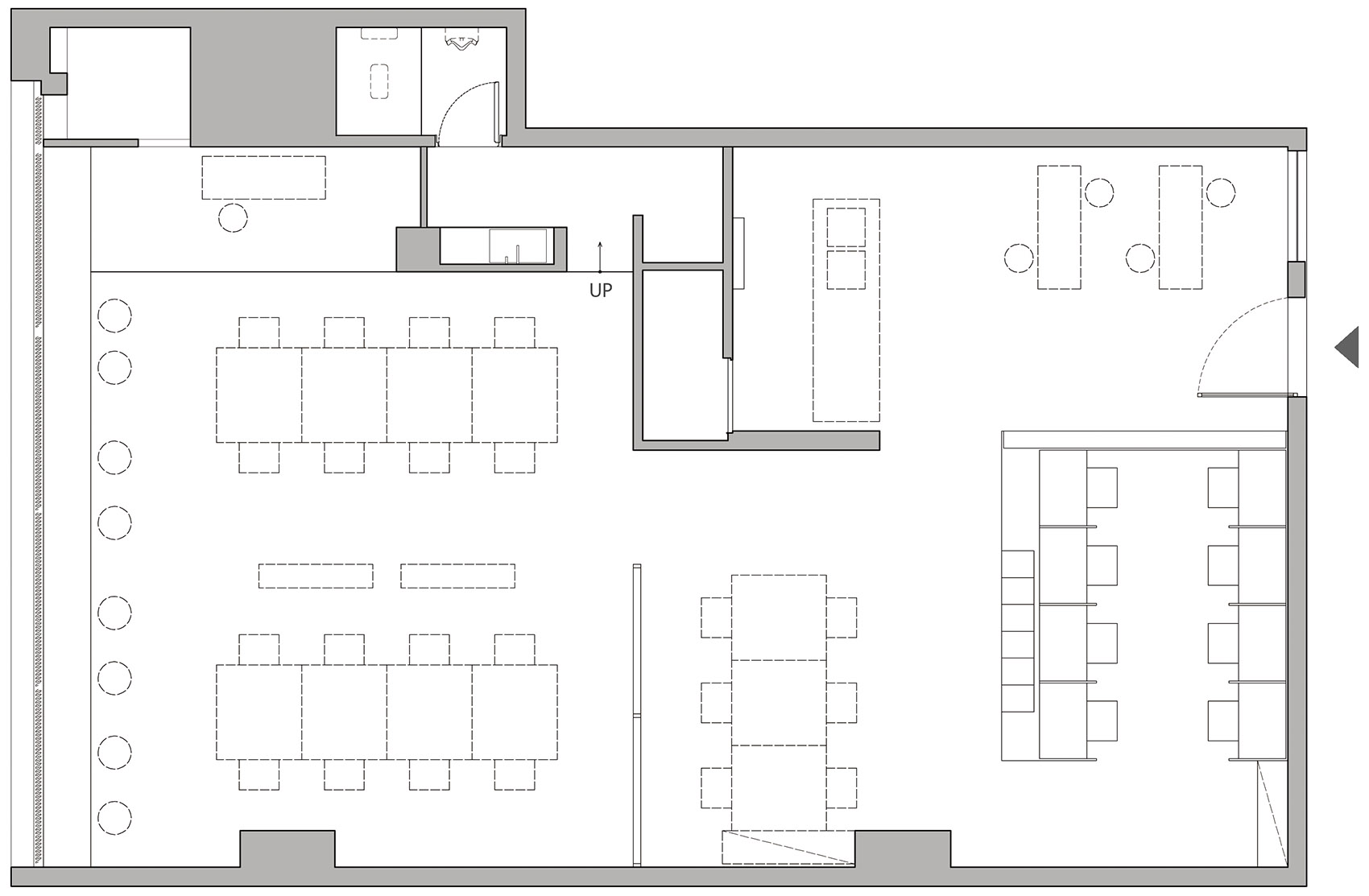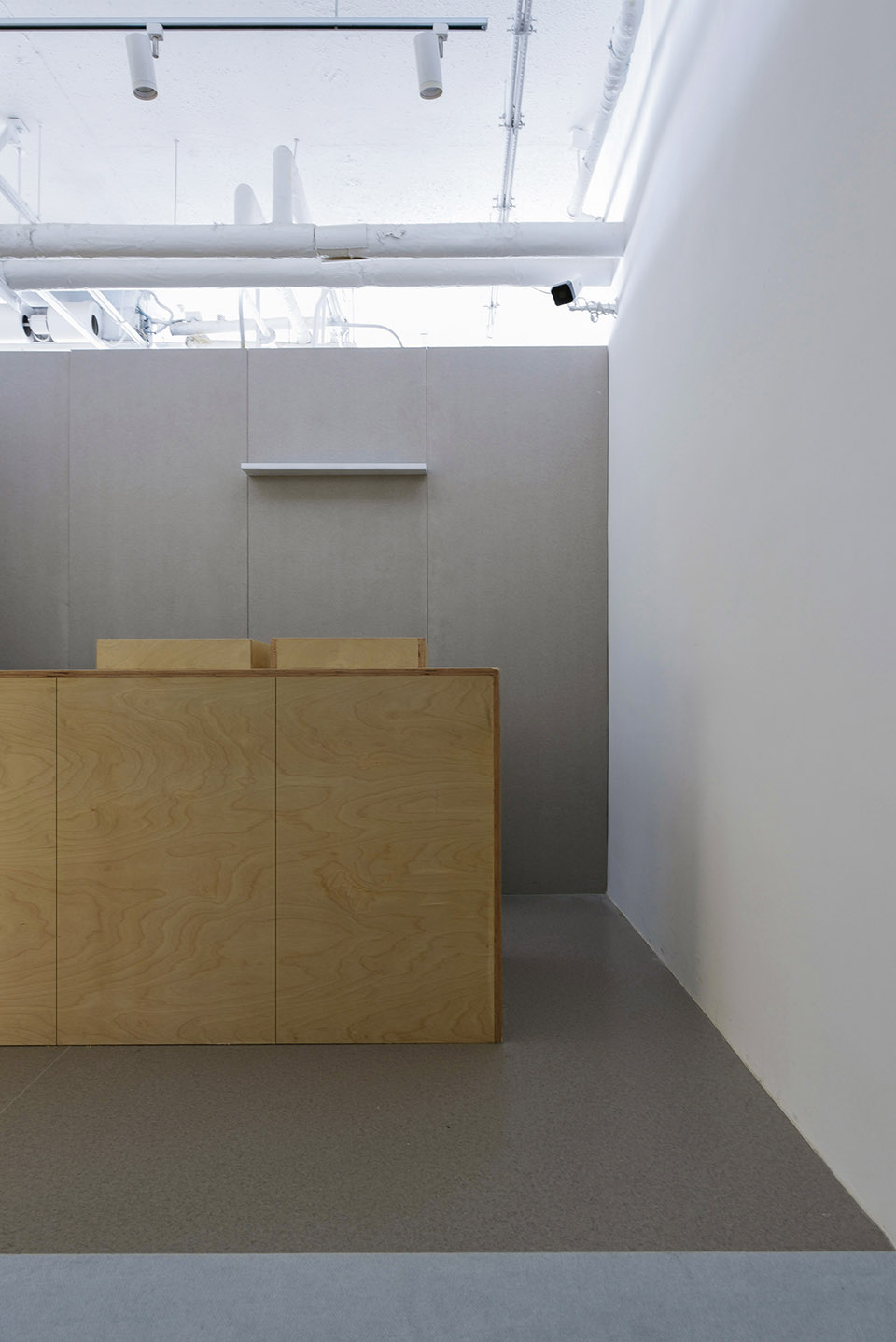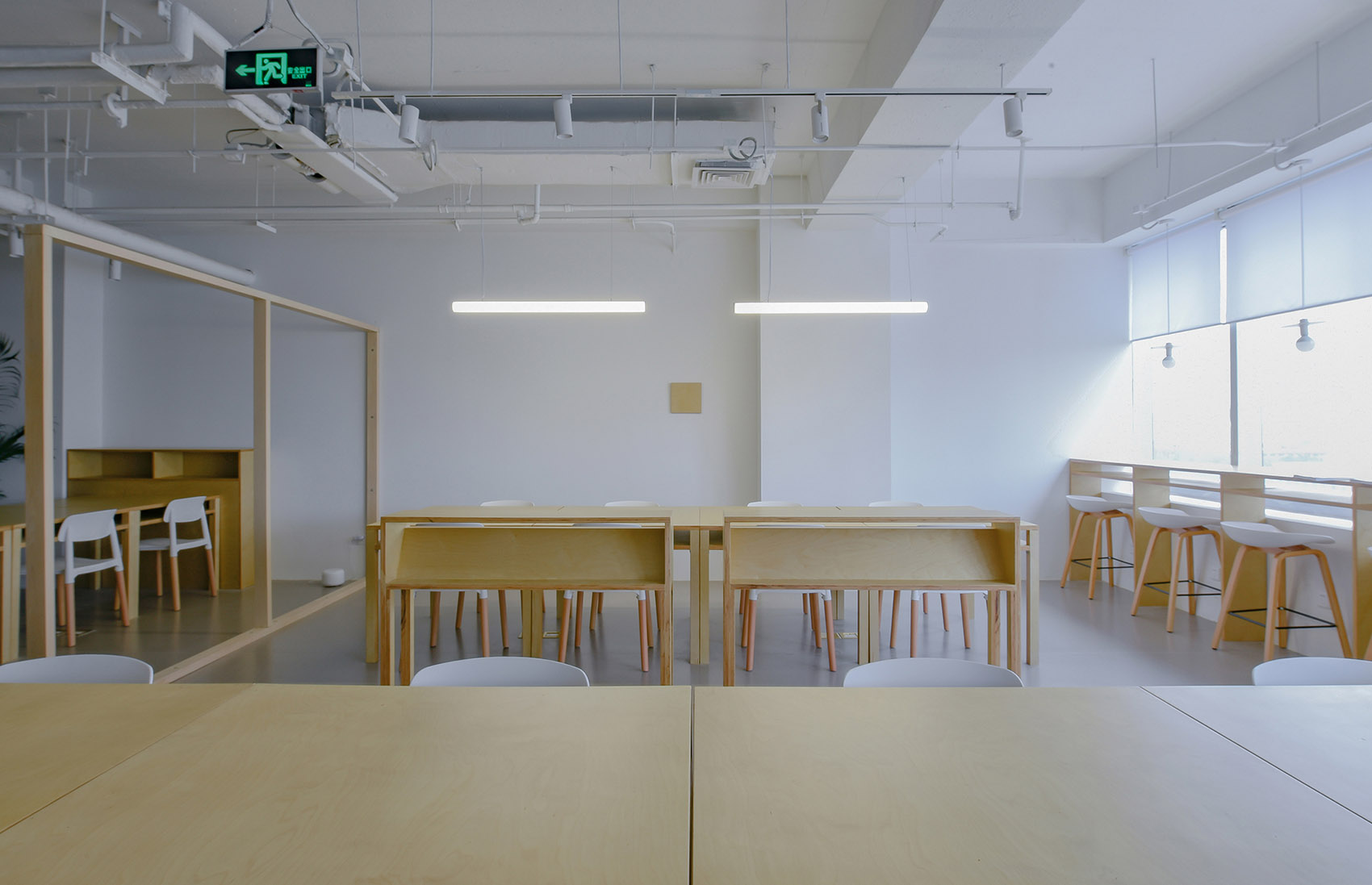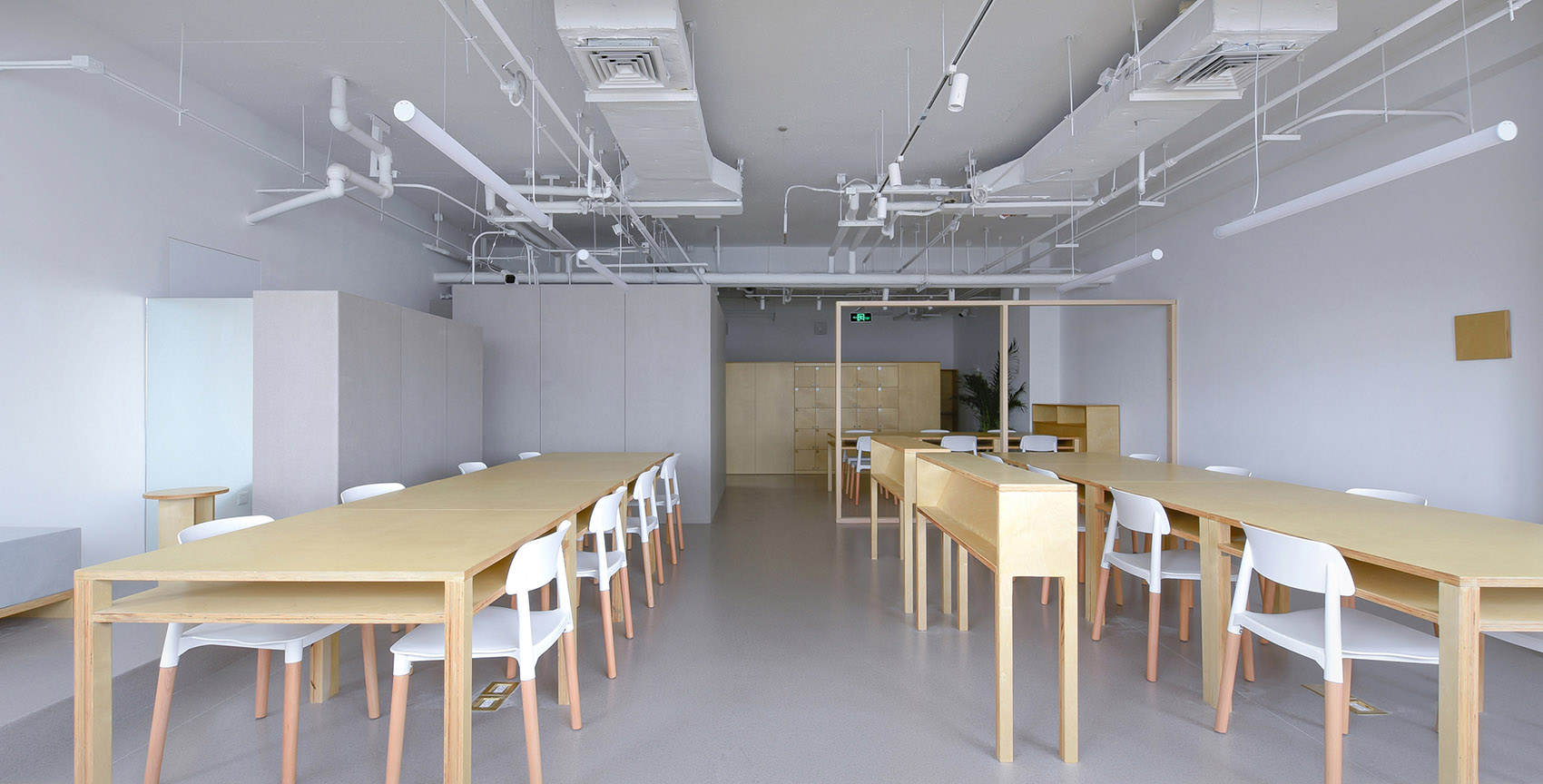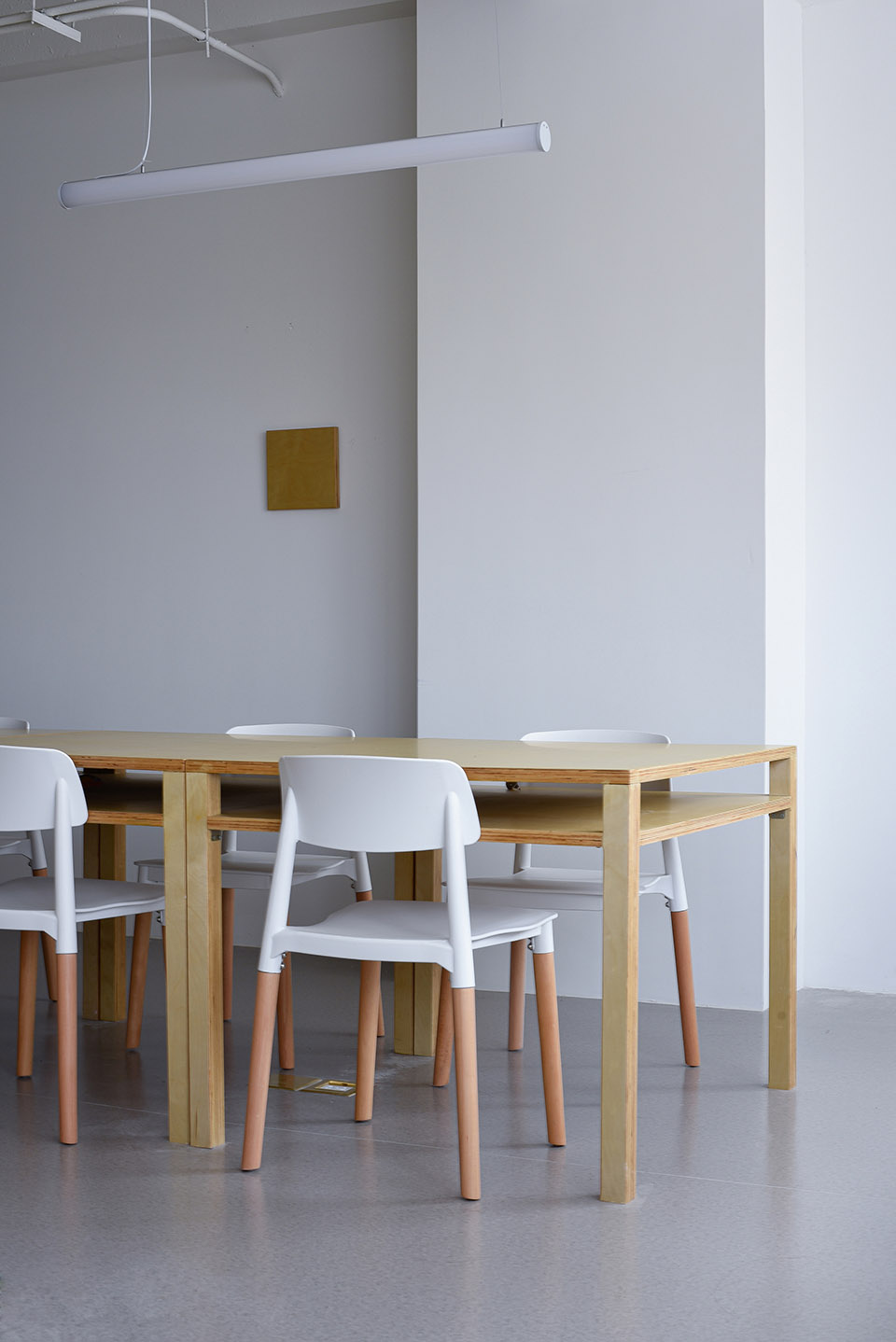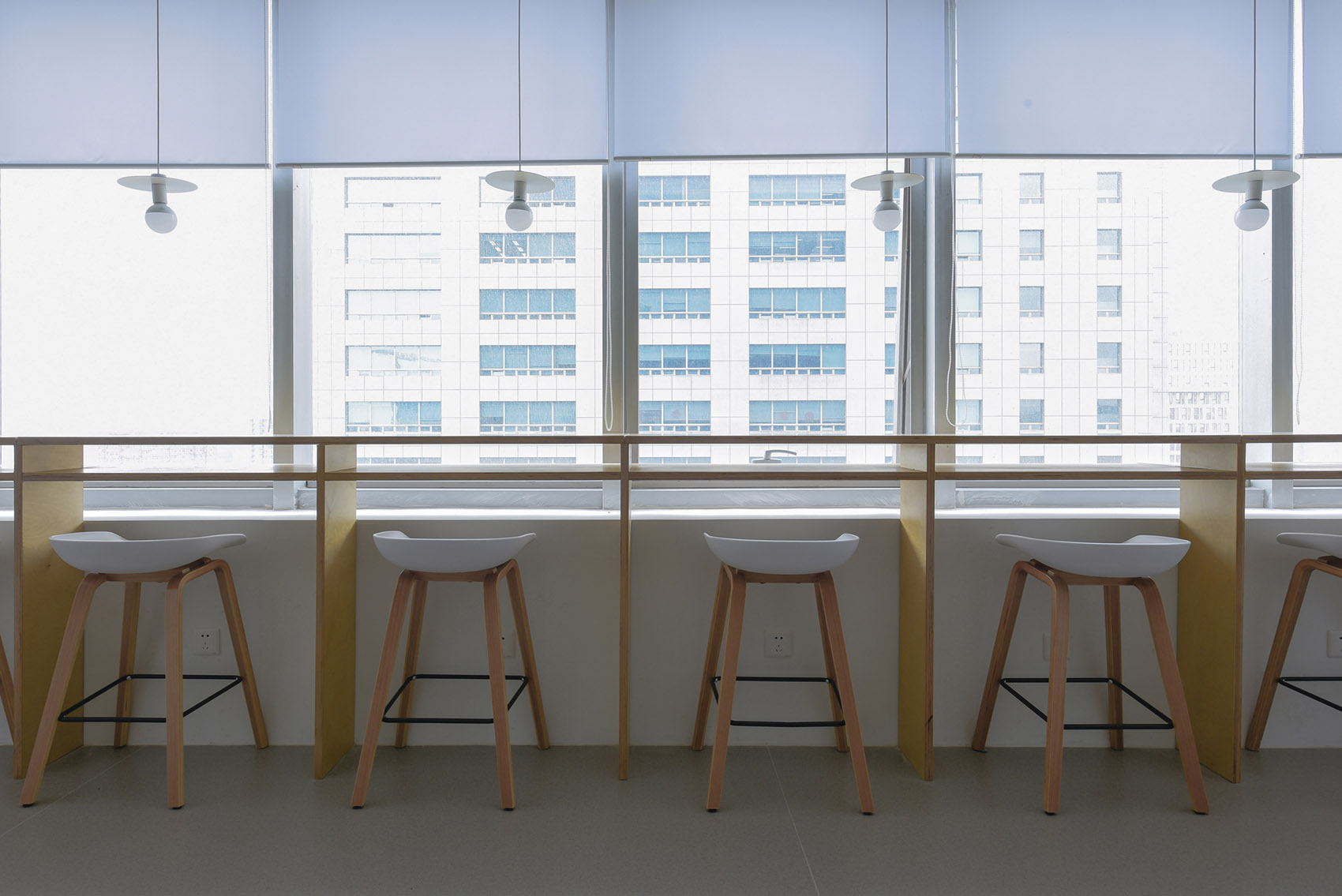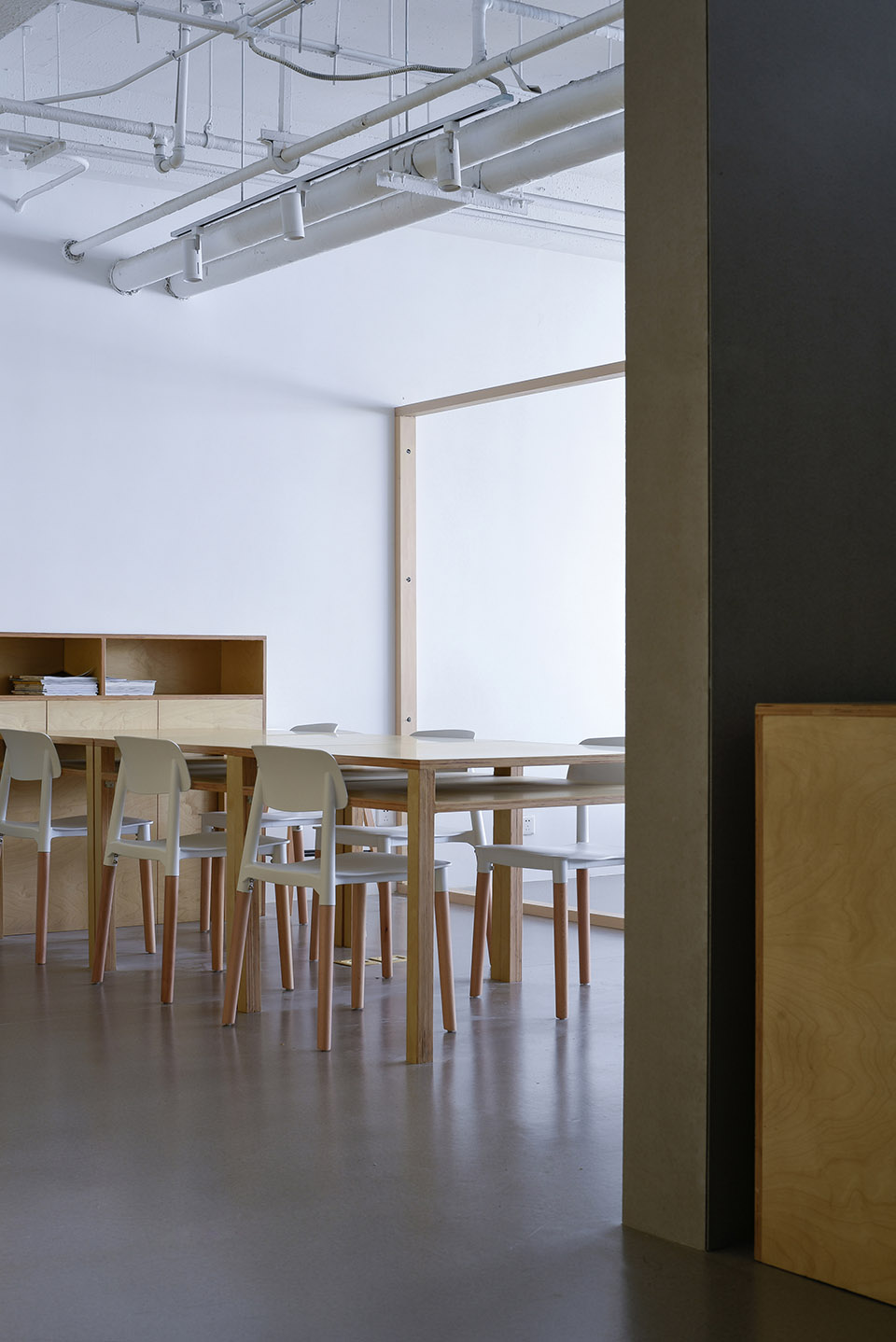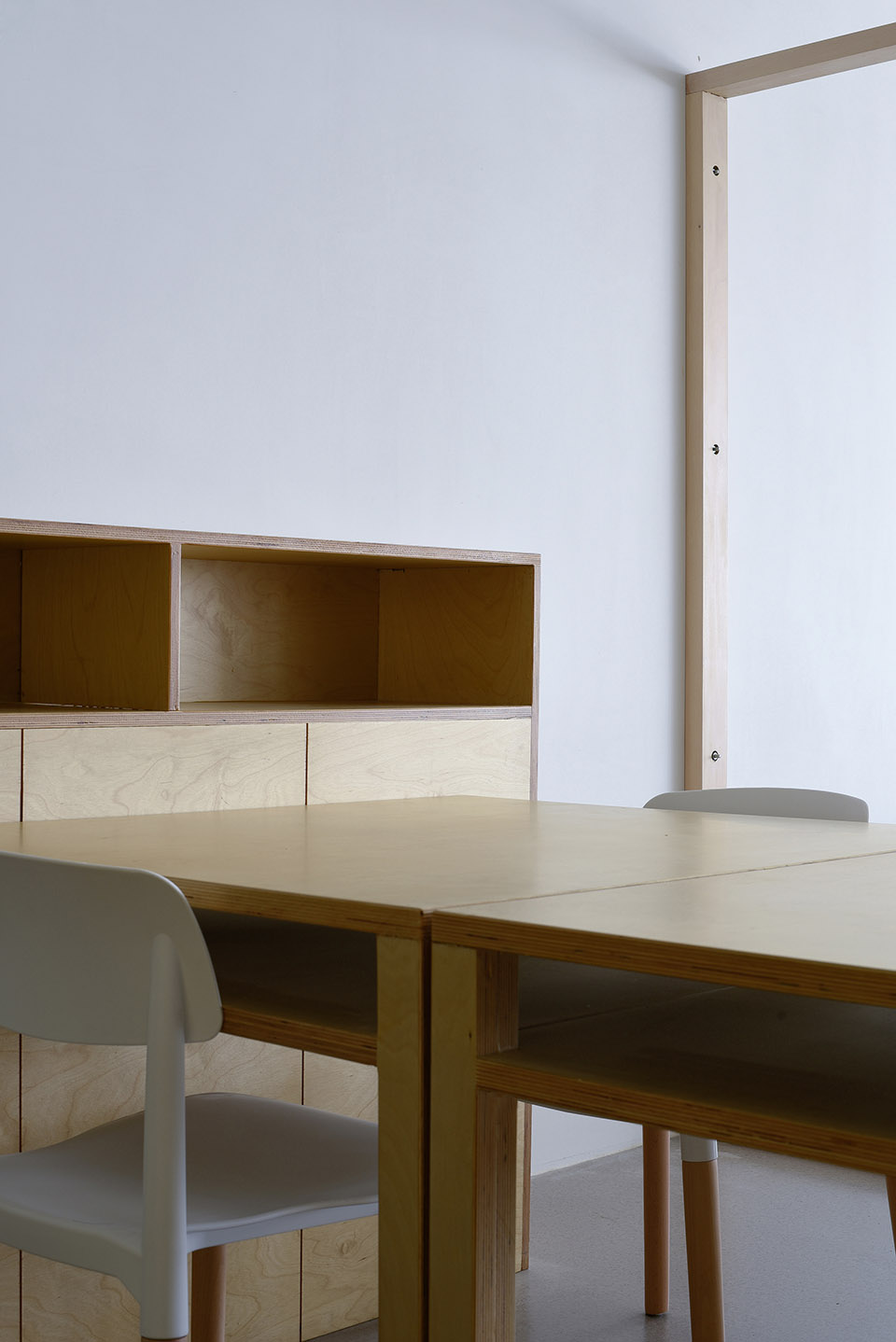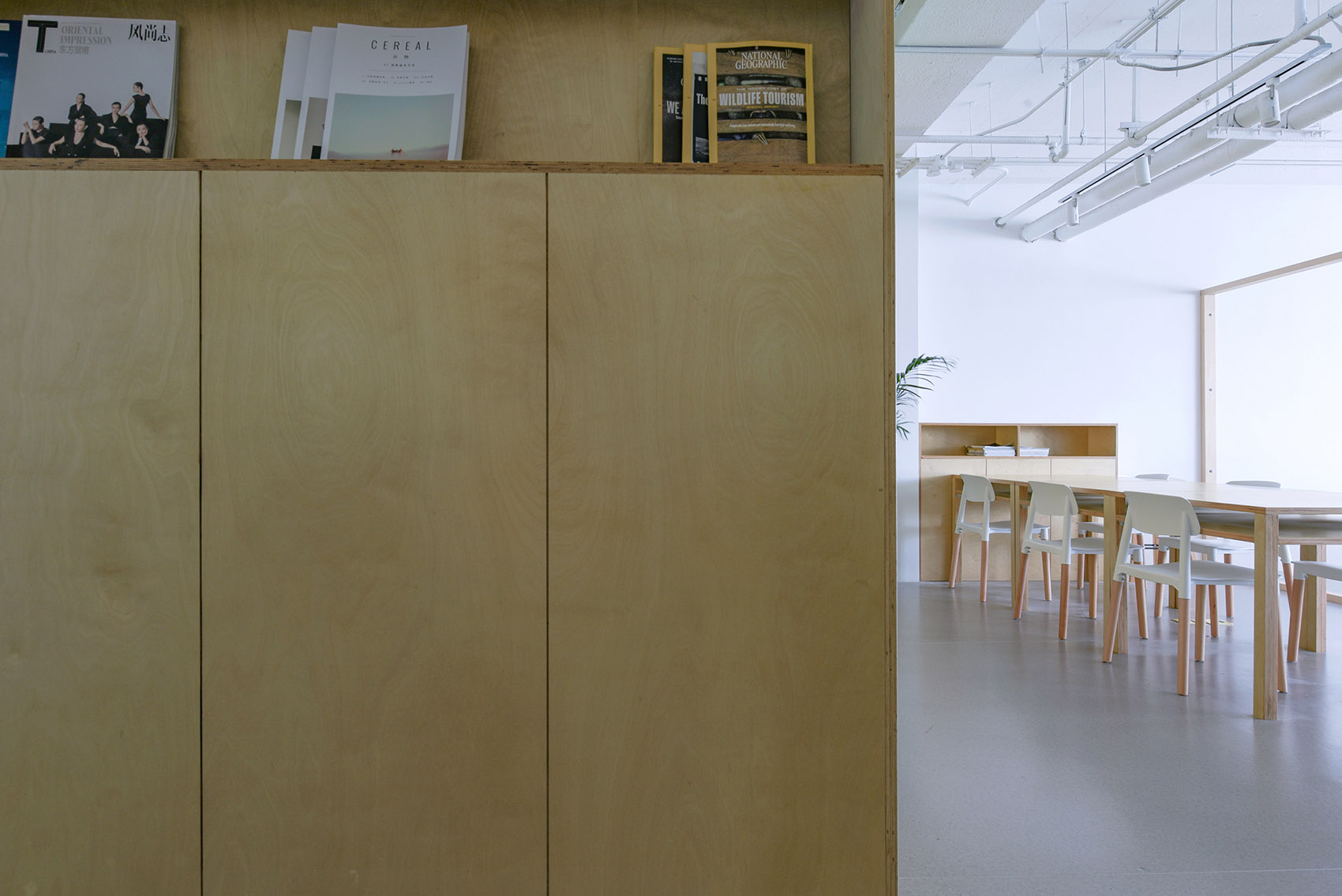“通过由一组物品间的互相关系及它们在这个新的结构中对功能的超越,才能使空间打开,充满活力和节奏,并同时使空间存在。”让•鲍德里亚(Jean Baudrillard)提到,“就某种角度而言,空间才是物的真正自由,而功能只是它形式上的自由。”
“It is through the interrelationship of a group of objects and their transcendence of function in this new structure that the space is opened up, full of vitality and rhythm, while at the same time making the space exist.” Jean Baudrillard mentioned, “in a sense, space is the real freedom of things, while function is only the freedom of its form.”
▼室内空间一览,overall view of the interior
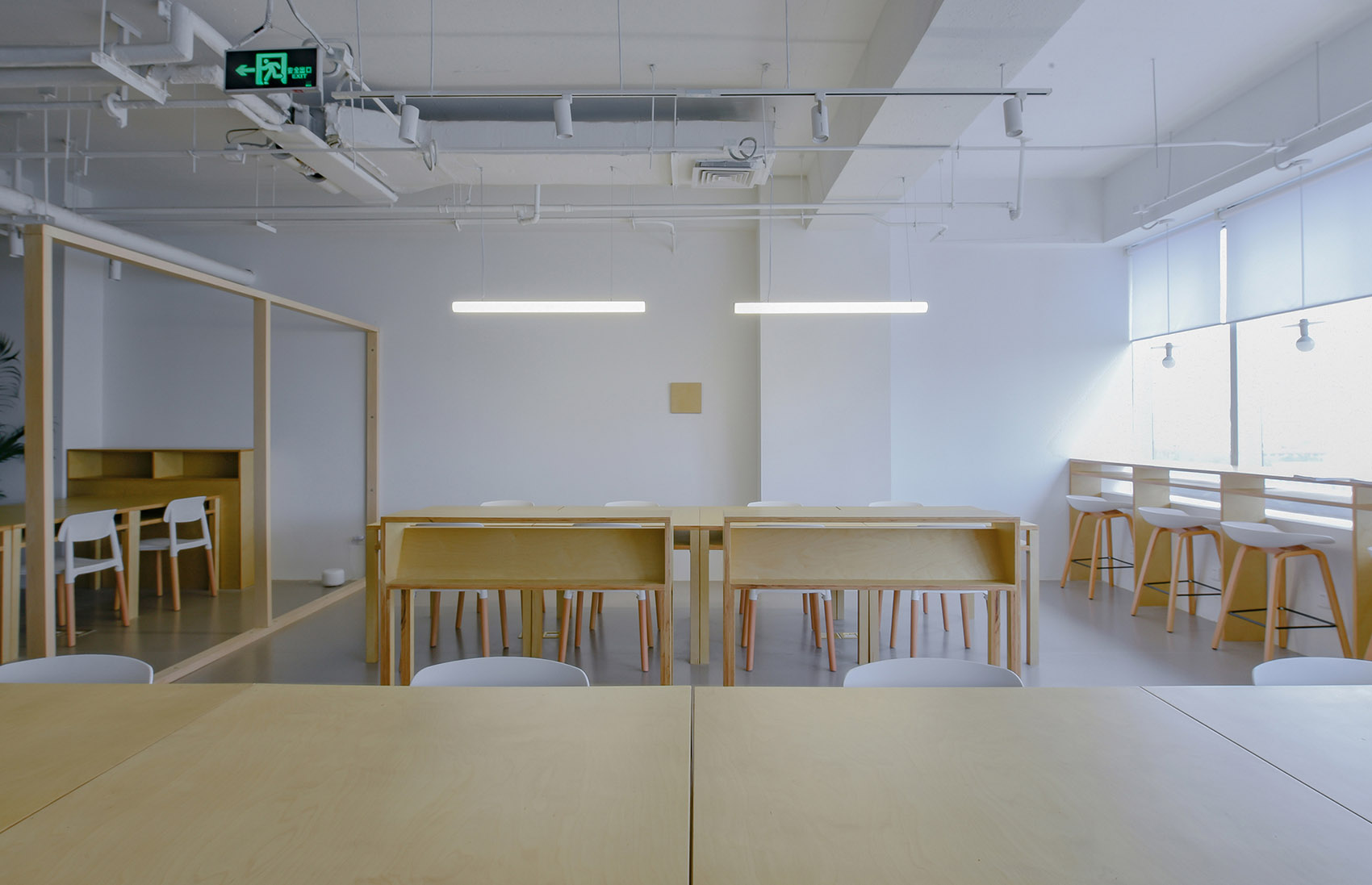
物相以“置放物体(Placement Object)”的介入方式对自在读书馆这一全新的共享学习空间进行诠释。在这里,无论墙体还是家具更像一个个物体被放置在场地中,而不是从平面自发生长出来。定制的隔断墙体与家具之间互相联系通达,每一部件又具有一种独一无二的临在感。我们更希望置放的物体以一种拟人的方式存在,这样人和形成场所的物体就会在同一种亲密感中发生关联。
Wson with “placed objects ” the way to ease library reading this new share learning space for interpretation. Here, both walls and furniture are more like objects placed in the site, rather than spontaneous growth from the plane. Custom partitions and furniture connect and connect, each with a unique sense of presence. We want the objects we place to be anthropomorphic, so that people and the objects that form the place are connected in the same intimacy.
▼分解轴测图,exploded axonometric
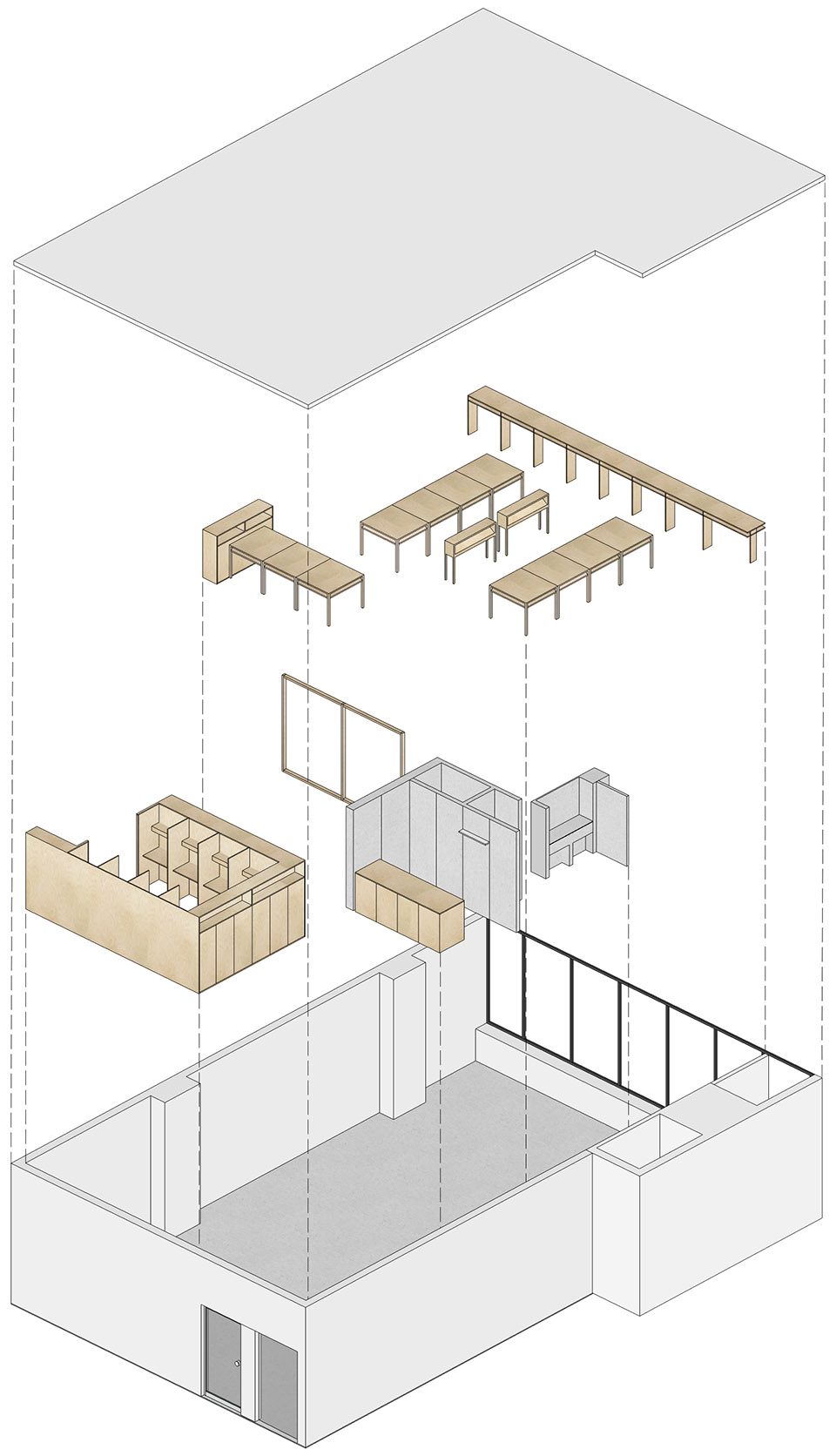
形成空间的物体紧密相连,无需过多的缓冲,从前台休闲区到读书区,再到开放吧台区,转换均在瞬间完成,这种串联式的体验感知,瞬时的光影变化,会使人产生一种情绪记忆的叠加效果。不仅如此,隔断墙体自身的尺度,与人的距离,限定了人的行为与动作,且不同的视点高度和视角,均使人在线性体验中产生不同的情感需求。
The objects that form the space are closely connected, without too much buffer. From the front desk leisure area to the reading area, and then to the open bar area, the transformation is completed in an instant. This kind of serial experience and perception, instantaneous light and shadow change, will produce a superposition effect of emotional memory. Not only that, the scale of the partition wall itself, the distance from people, limits people’s behavior and action, and the different height and perspective of view, all make people have different emotional needs in linear experience.
▼前台休闲区,front desk leisure area
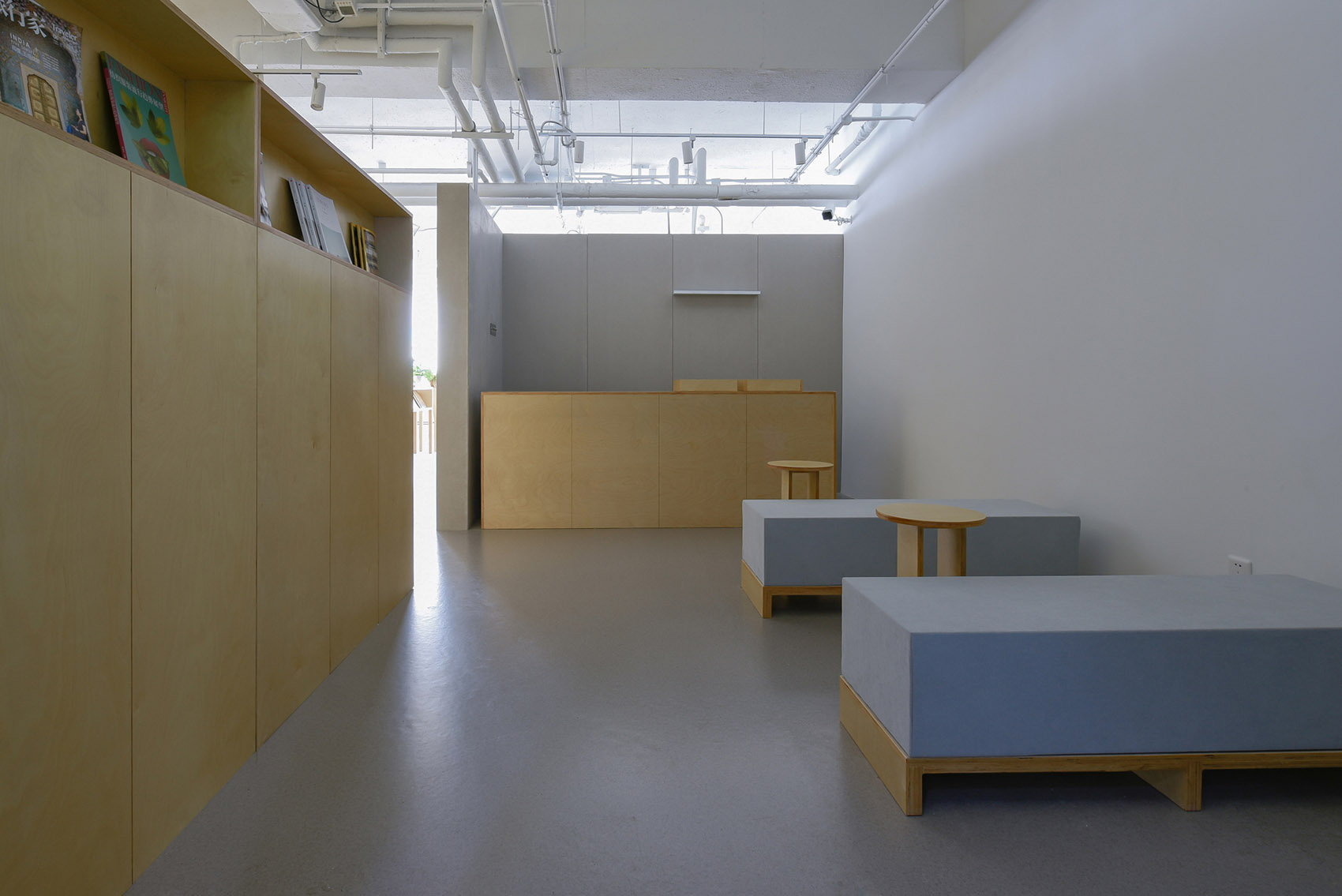
▼前台,front desk
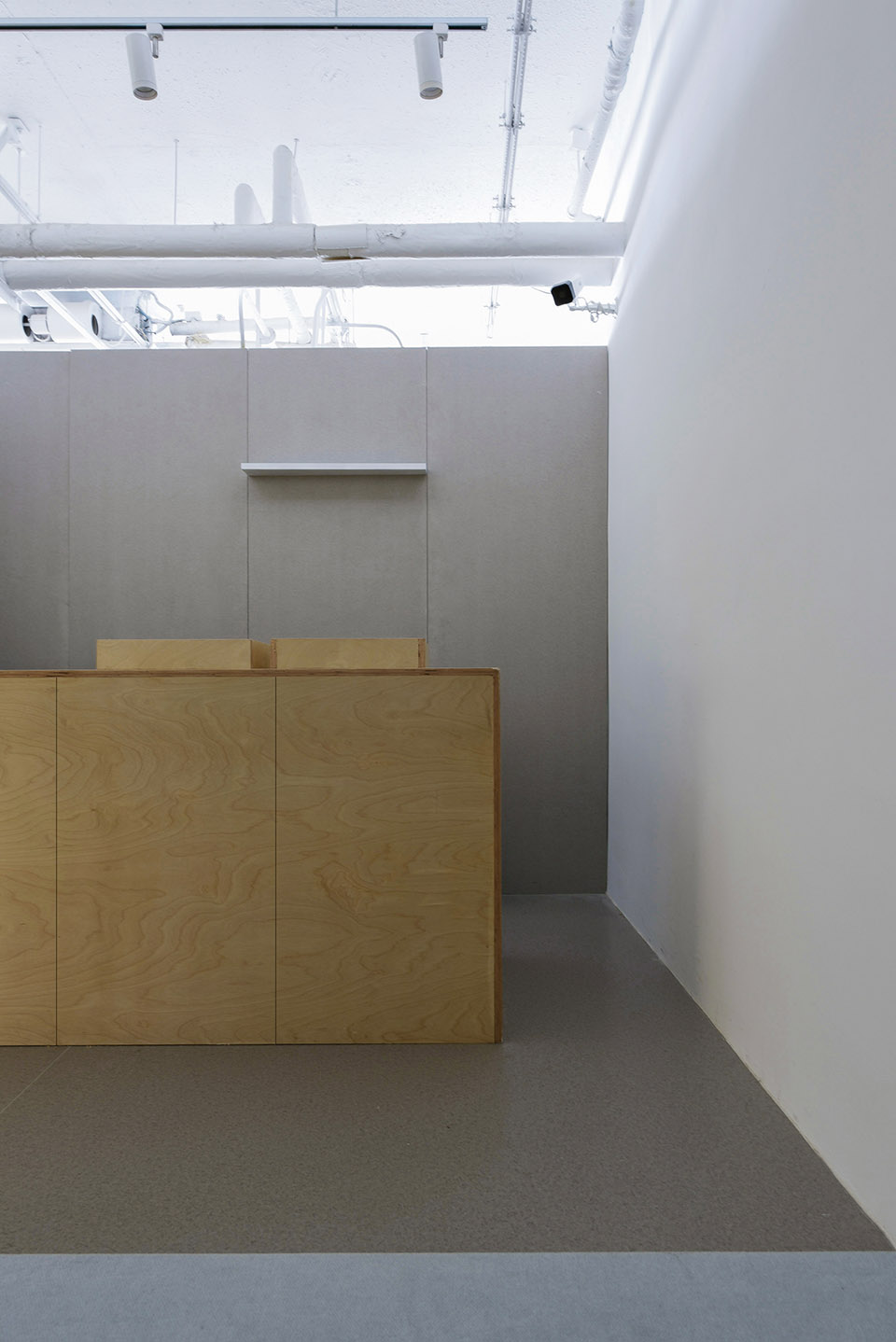
▼读书区,reading area
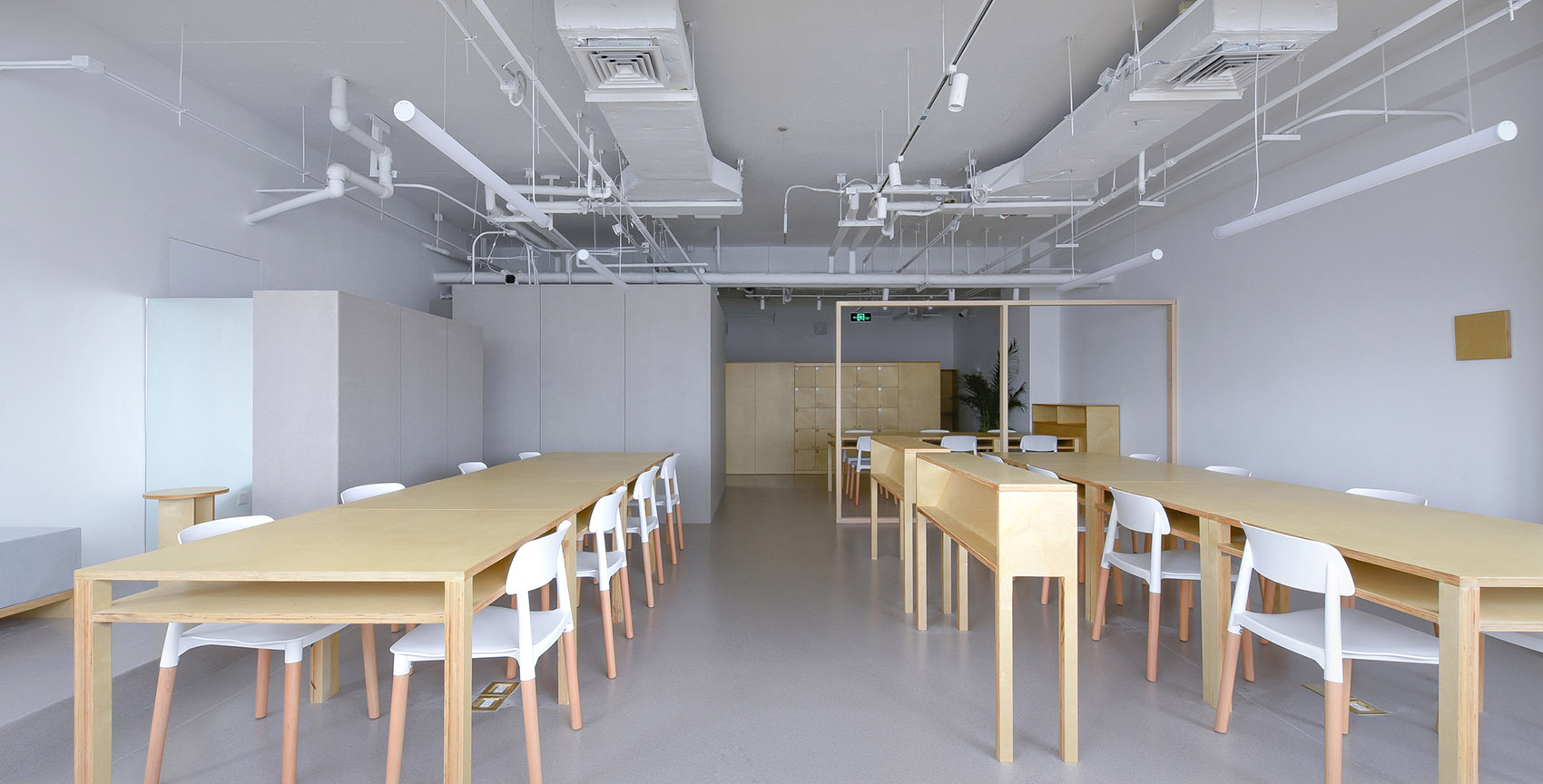
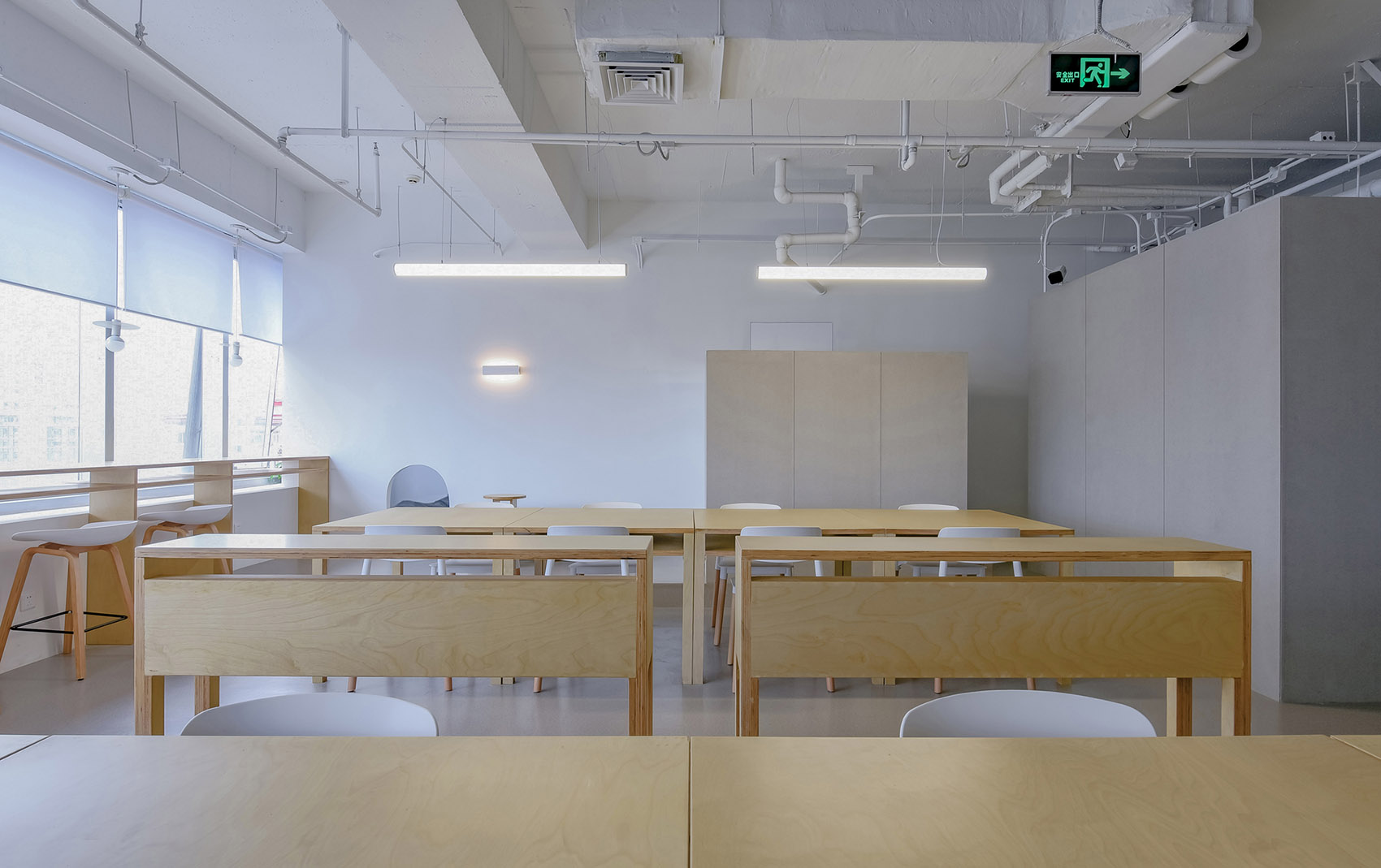
▼读书区细部,closer view of the reading area
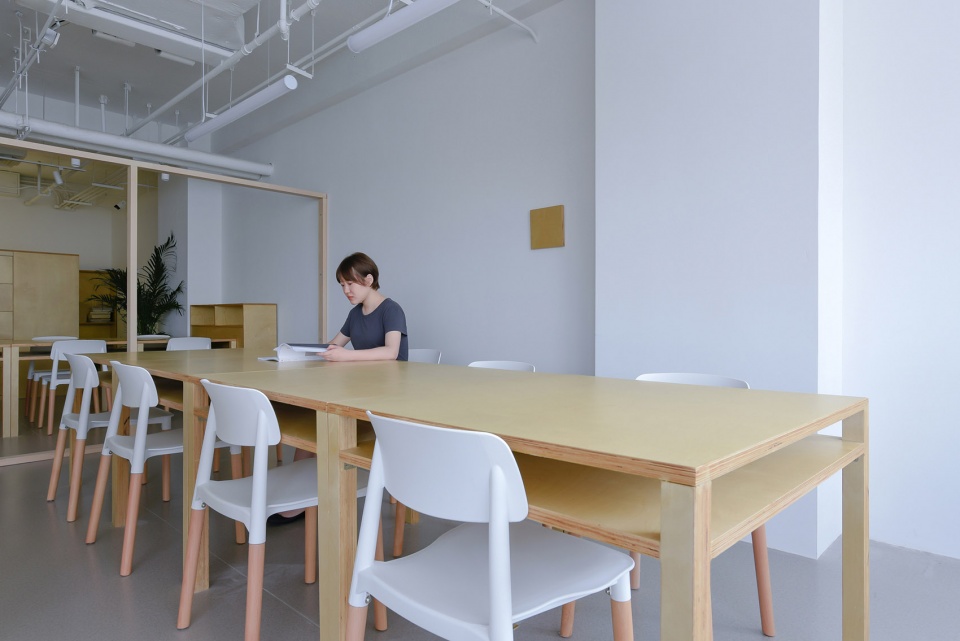

▼开放的吧台,open bar area
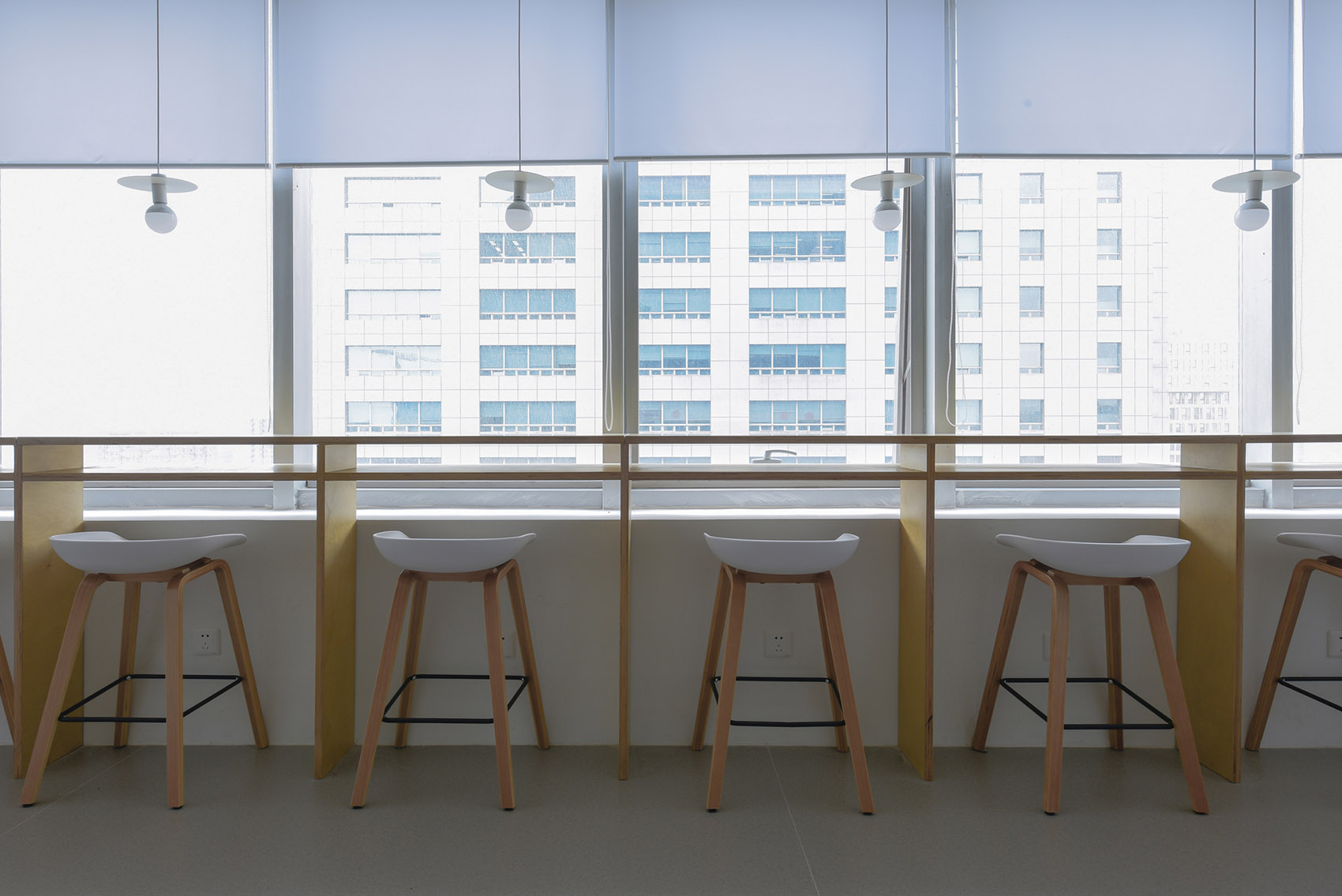
物质性接近本真的材料会呈现出和人的某种亲近关系,故此我们选取未经表面处理的硅酸钙板和自然温润的桦木多层板作为表现材料。根据未来场地会进行讲座、展览、集会等活动,物相设计了一系列可移动组合的家具产品,依托隔断墙体物,搭建一幕幕人与物体共存的剧场,更为使用者创造出一种自然、静谧的空间氛围。
Materials that are close to the real material will show a close relationship with people. Therefore, we choose calcium silicate board without surface treatment and natural and moist birch multilayer board as performance materials. According to the lectures, exhibitions, gatherings and other activities in the future, a series of movable furniture products are designed. Relying on partition wall objects, theater where people and objects coexist is built to create a natural and quiet space atmosphere for users.
▼材料细部,material details
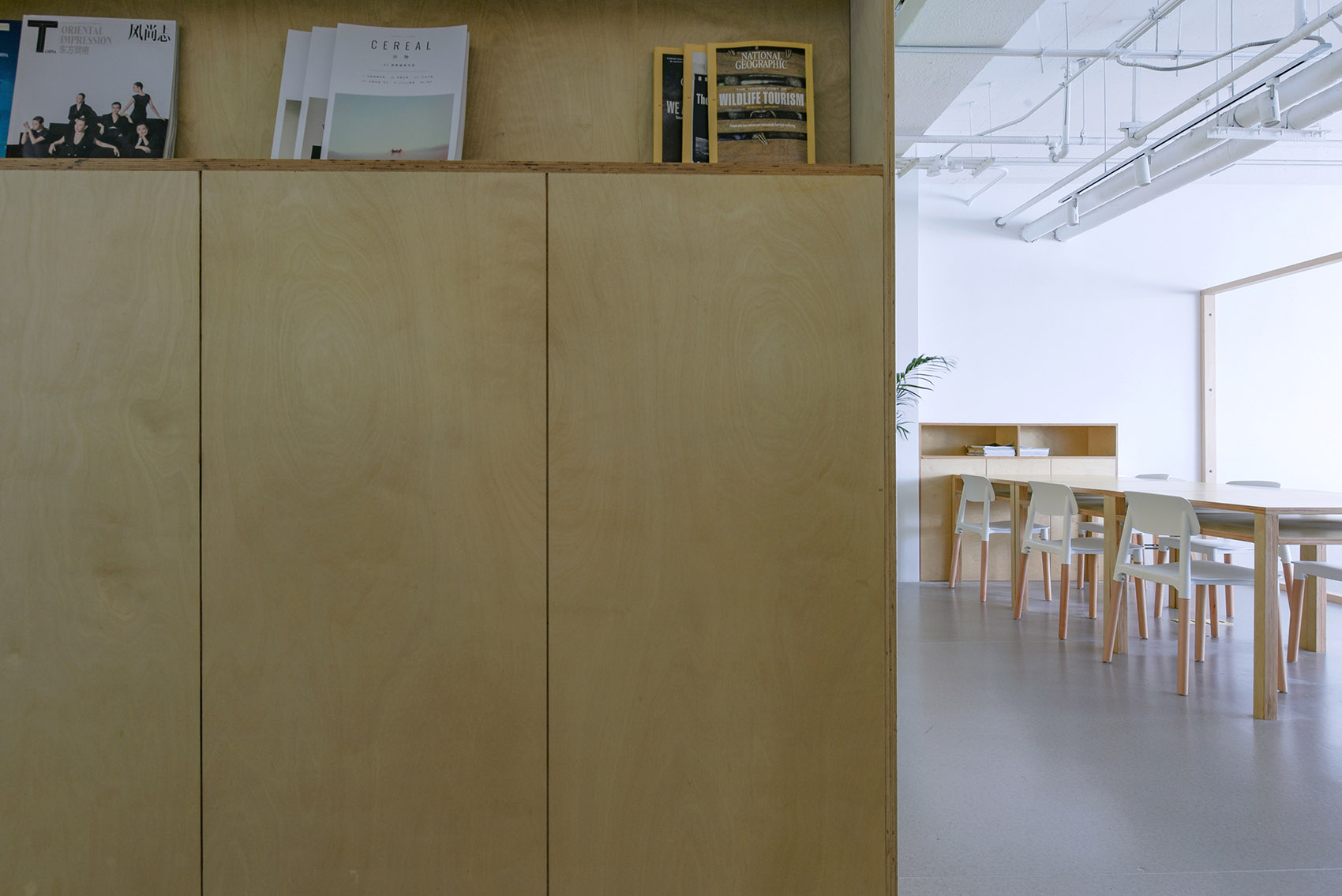

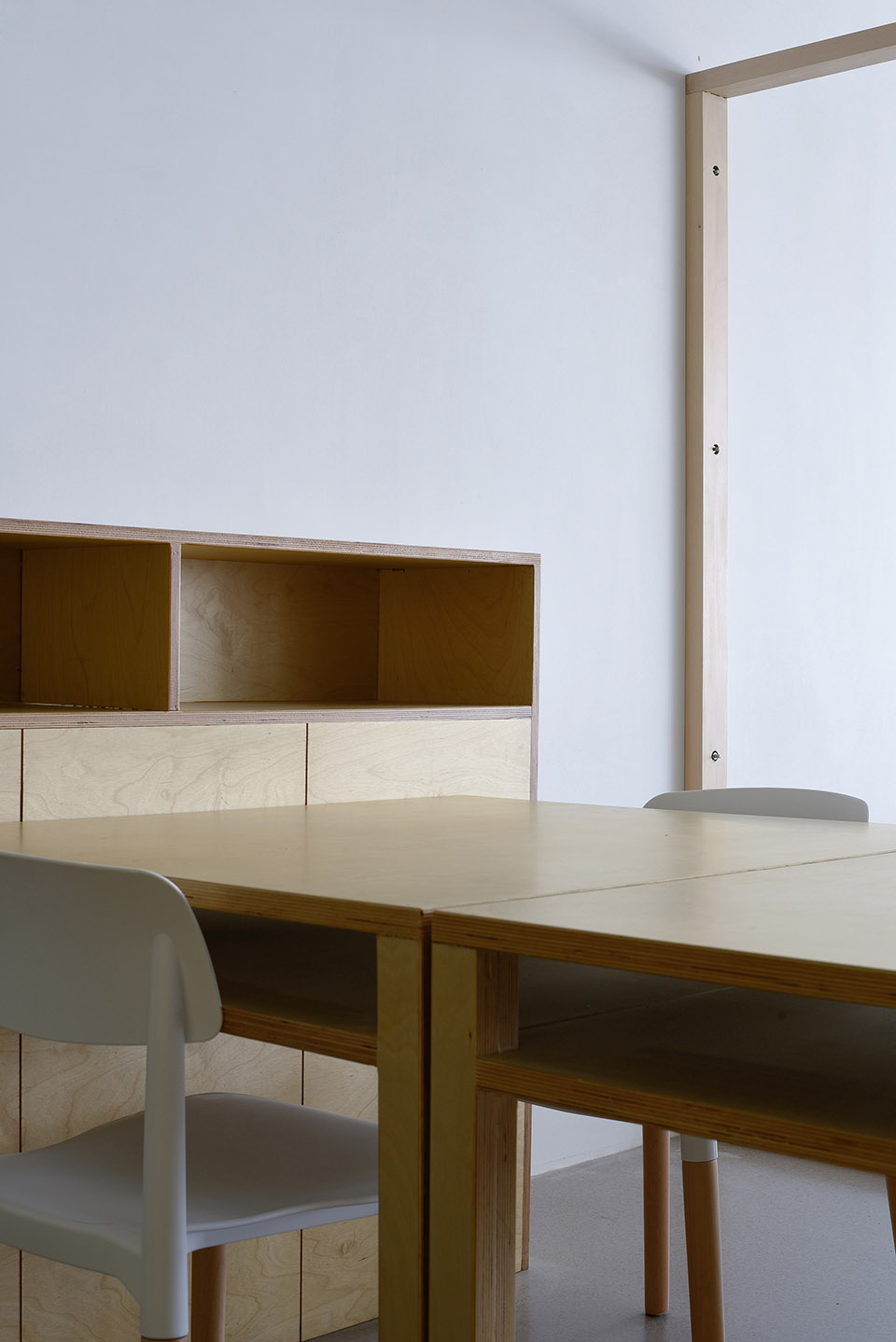
▼平面图,plan
